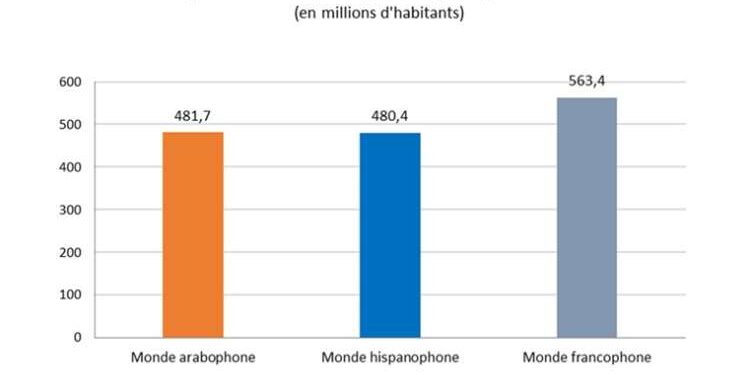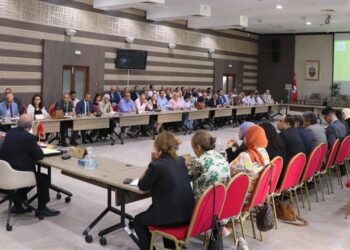The population of the Arabic-speaking world has exceeded that of the Spanish-speaking world and experienced rapid growth, with 481.7 million in mid-2023 inhabitants. The Arabic -speaking world is now the second most populous linguistic space on the planet, after the French -speaking space.
According to recent data from the Population Reference Bureau (PRB) reported by the Center for Study and Reflection on the French-speaking world (CERMF), the Arabic-speaking world has exceeded the Spanish-speaking world in terms of population, with a total of 481.7 million inhabitants in mid-2023.
This rapid demographic expansion plans to extend in the decades to come, while the growth of the Spanish -speaking population should be more moderate than the world average.
The Arabic -speaking world extends over two continents and encompasses 20 countries with Arabic as an official language, as well as Arabic -speaking parts of two other countries and Arabic -speaking territories in nine other countries.
On the other hand, the Spanish-speaking space covers three continents and has 20 countries where Spanish is the official or co-official language, in addition to Puerto Rico and certain majority Hispanophone communities in the United States and Belize.
According to PrB estimates, the population of the Arabic -speaking world recorded an increase of 1.9% per year, compared to 0.9% for the Spanish -speaking space. With an overall fertility rate of 3.2 children per woman in the Arabic -speaking world, against 1.8 in the Spanish -speaking space, this demographic trend highlights significant disparities.
The five most populated Arabic -speaking countries are Egypt, Sudan, Algeria, Iraq and Morocco, while for Hispanophone countries, it is Mexico, Colombia, Spain, Argentina and Peru.
The Arabic-speaking world is positioned as the second most dynamic linguistic space after the French-speaking space, which recorded a 2.1% increase to 563.4 million in mid-2023 inhabitants, spread over four continents.
Five countries of the French -speaking space are also part, totally or mainly, of the Arabic -speaking space, notably Tunisia, Algeria, Morocco, Mauritania and Chad. Among the Arabian -speaking countries, those who experienced the highest population growth are Somalia, Mauritania, Chad, Sudan and occupied Palestine.
Nevertheless, the Spanish -speaking world suffers from strong inequalities in terms of distribution of wealth, classifying it among the three most unequal linguistic sets in the world, alongside English and Lusophone spaces. In addition, despite a slowdown in population growth, many Hispanophone countries have been affected by serious economic crises.
PRB’s projections indicate that the Arabic -speaking world should maintain its demographic trajectory, reaching 795 million inhabitants by 2060. This rapid growth could have major repercussions on the region’s economy, politics and culture, as well as its global influence.






